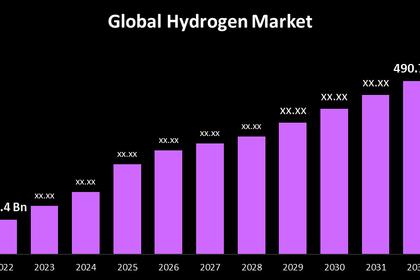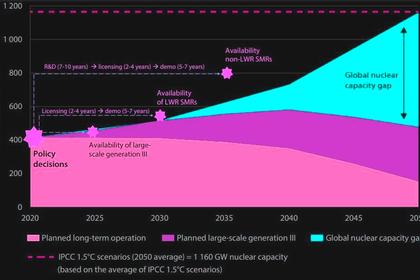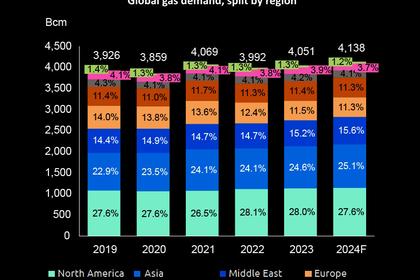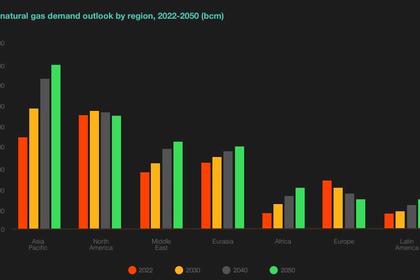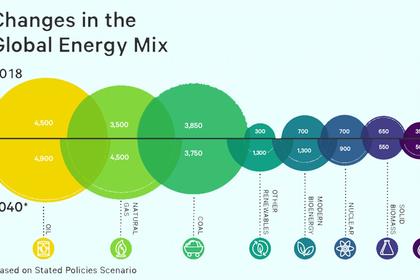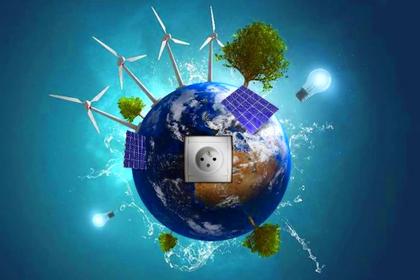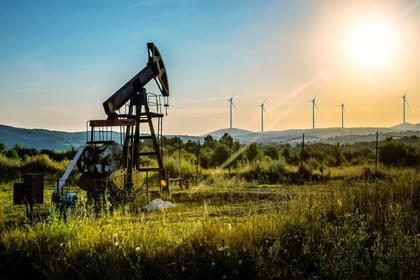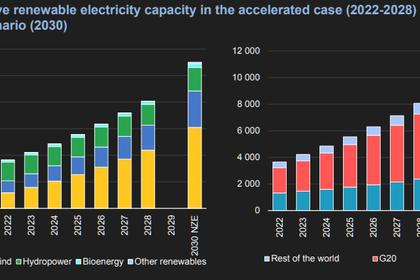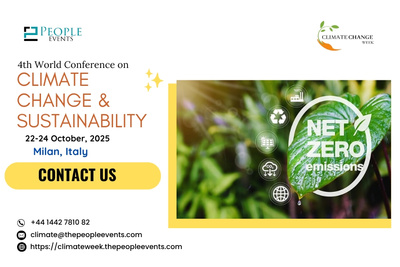
GLOBAL ENERGY SYSTEM SUSTAINABILITY
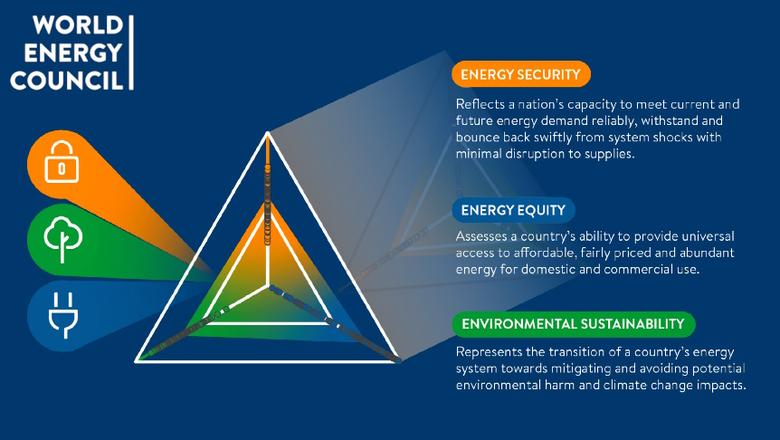
By Ines Jacob Associate Programme Officer, International Renewable Energy Agency (IRENA)
ENERGYCENTRAL - Oct 8, 2024 - Climate change is posing an unprecedented threat to power systems worldwide, with increasing extreme weather events causing widespread disruptions and highlighting the urgent need for enhancing grid resilience. Although this is a global issue, least developed countries (LDCs) and Small Islands Developing States (SIDS) have a greater degree of vulnerability and fewer resources to prevent, withstand, and recover from the impacts of these events. At the core of the issue is the vulnerability of power systems to these extreme weather events, which cause severe damage to power infrastructure and often lead to power outages. The power system is an interconnected network and the failure of one component can have cascading effects and lead to extensive outages. Furthermore, the vulnerabilities of the power sector have cascading effects on critical infrastructure such as communication, health and other emergency services. On a power system level, a lack of situational awareness, inadequate system visibility and ageing infrastructure further contribute to a wider disturbance propagation and slowing down of restoration services.
The urgency of addressing this problem is heightened by the expected increasing reliance on power systems in the future. According to IRENA’s 1.5°C Scenario, electricity will account for over 50% of total final energy consumption by 2050, while its share in 2019 was 22% (IRENA, 2023). It is, therefore, no longer sufficient to have cleaner power systems contributing to net zero, but the aim should be to develop power systems that can withstand the pressures of changes in demand and extreme events.
Building the resilience of the energy sector and in particular the power sector is a key step in climate adaptation.
Leveraging NDCs as a tool for resilience planning
The next round of Nationally Determined Contributions (NDC) updates, NDC 3.0 – which should be submitted by Parties of the Paris Agreement by 2025 -, offers a crucial opportunity for countries to prioritize power system resilience within the adaptation component of NDCs. The NDCs can lay the groundwork for resilience planning by effectively communicating key priorities and actions. Many countries mention generic climate resilience in the previous round of their NDC submissions, and some countries like the Philippines and the United States have highlighted resilience in the power system as a priority. Countries can leverage their upcoming NDC updates to outline specific targets for enhancing grid resilience, such as increasing the share of DERs in the energy mix, implementing grid modernization measures, and developing early warning systems for extreme weather events.
IRENA is bringing out a publication on climate proofing power systems, providing guidance on climate resilience planning for policy makers, utilities and power sector stakeholders. It includes discussions on the technological, policy and financial solutions that can be used to improve climate resilience in power systems, citing examples of success stories from different countries.
Planning considerations for power system resilience
Although no unanimous definition exists, resilience refers to the inherent characteristics of a system, namely its ability to anticipate, absorb, recover from and adapt to a hazardous threat. Resilient systems reduce the probability and severity of impact of events and the time of recovery from failures. Planning for resilience should be preparatory and preventive in nature and involve stakeholders from other interlinked infrastructure such as gas, water, communication etc. This will ease buy-in and accelerate the process. Planning for resilience enhancement needs to include an assessment of vulnerabilities across the power system, as well as of the most likely and severe extreme weather events in the area. From this process, different resilience measures can be identified to address those vulnerabilities. Resilience measures can include, among others, hardening infrastructure to withstand extreme weather events, diversifying energy sources to reduce reliance on vulnerable transmission lines, implementing microgrids to provide localized power supply during outages, and developing advanced forecasting and monitoring systems to improve situational awareness. Often, resilience measures rely on substantial capital investments. Thus, a cost-benefit analysis can support in prioritizing the most cost-effective ones.
DERs and their role in resilience building
Distributed energy resources (DERs) offer an alternative to conventional power generation and have seen increased deployment in recent years. DERs encompass a wide range of technologies, including solar PV, wind turbines, battery storage, microgrids, and demand-side management systems. These technologies can be deployed strategically to enhance grid resilience by providing backup power during outages, improving grid flexibility, and reducing reliance on centralized power generation. DERs are modular in characteristic, enabling swifter deployment compared to large-scale power facilities and high-voltage transmission infrastructure. Furthermore, their modular design and scalability facilitate faster recovery in the event of damage.
Examples of deployed DERs include the implementation of small-scale hydro and solar PV distributed generation in Vanuatu, which provides stable and resilient power supply, especially during extreme weather conditions. Bermuda has in turn developed microgrids and integrated various DERs, including solar PV and battery storage, to support its energy transition. These DERs have enhanced the resilience of Bermuda's power grid by providing backup power during extreme weather events and reducing the dependency on centralized power generation. In Burkina Faso, the “Yeleen Rural Electrification Project” aims to install solar mini-grids and individual solar systems in rural areas with an envisaged objective of improved energy access and grid resilience by decentralizing power generation, making the grid less vulnerable to disruptions.
The Role of DERMS in resilience building
Distribution utilities face a significant challenge in maintaining grid reliability and resilience in the face of unpredictable generation and demand, as well as during weather-related outages. The key to overcoming this is a cost-effective grid modernization that is implemented at both the software and hardware levels. Distributed energy resource management (DERMs) is a technology solution or platform that aggregates grid-connected DERs, including solar photovoltaic (PV), batteries, and electric vehicles (EVs) to fully capitalize on the benefits of DERs. This solution includes both hardware and software. DERMs can assist in the real-time monitoring, control, and continuous dispatch and optimization of the power supply from the DERs. Some of the primary applications of DERMs include the enhancement of grid flexibility, reliability, and overall resilience, as well as the resilience of the system to extreme events. Additionally, DERMs are used in dynamic load management, residential energy management systems, and dynamic tariff setting. DERMs provide real-time situational awareness and automated response by utilizing data from renewable energy, the environment, and power lines to identify and isolate disruptions, particularly in vulnerable communities. This data, which is acquired through grid sensors, can be used to assess the grid's current condition and the electricity that is available for outage recovery. By reconnecting DERs to establish electrical islands with grid forming solutions, a smoother recovery is facilitated. During extreme weather events, DERMS can play a crucial role in isolating affected areas, rerouting power flows, and managing distributed generation resources to maintain essential services and accelerate restoration efforts.
Call to action
To successfully transition to a net zero future and operate a power system that can be resilient against extreme weather events, utilities must adopt grid modernization solutions. DERMS is an enabling technology that can help support the integration of DERs and building power systems that can recover faster from extreme events. Countries must take advantage of emerging technologies like DERMS to better manage and control power systems. They must prioritize climate-proofing of power infrastructure, taking advantage of documents such as NDCs to communicate key priorities and actions for power sector stakeholders. Policymakers, utilities, and investors must prioritize investments in grid modernization, DER deployment, and DERMS implementation to ensure a resilient and sustainable energy future. International cooperation and knowledge sharing are also essential to accelerate the adoption of best practices and innovative solutions for enhancing grid resilience worldwide.
Our role in supporting the energy transition
IRENA continues to produce knowledge products that provide information on the advantages of DERs, especially involving renewable energy technologies and enabling technologies. We support countries in their energy transition through informative knowledge products, technical assistance, and capacity building.
-----
Earlier:
